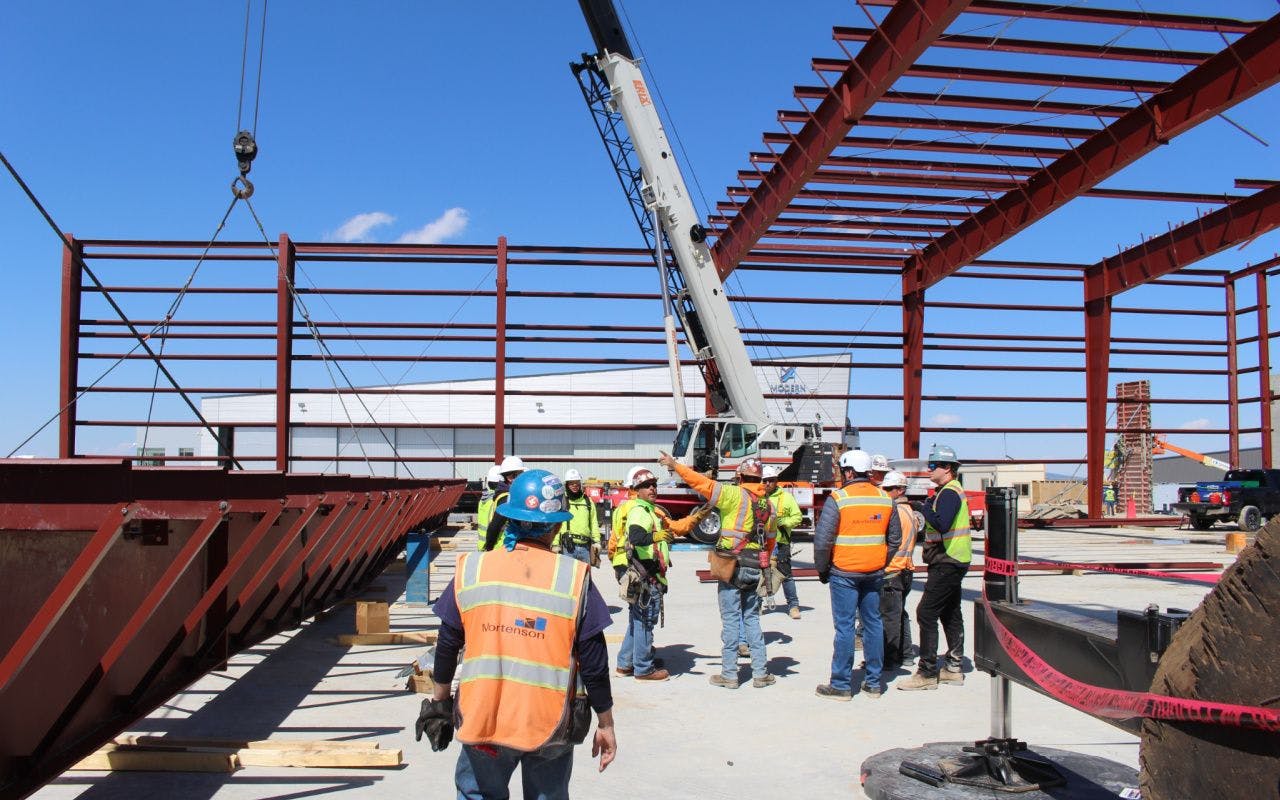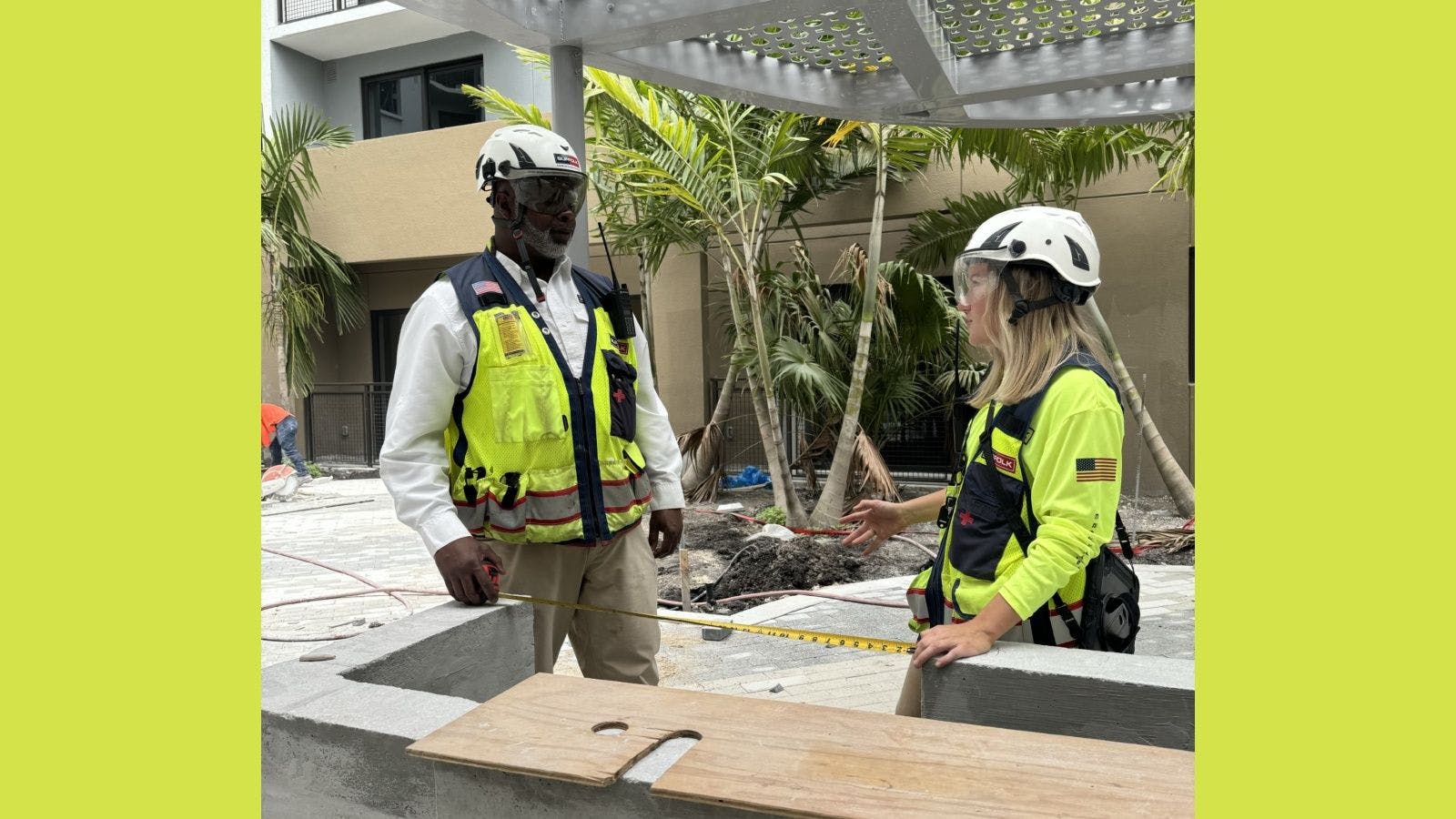
Case Study: Three Tips for Training and Retaining a New Generation of Craft Workers
We have all seen the stats: The industry needs hundreds of thousands more craft workers to meet demand in the next year alone. Currently, more than a third of the industry is over 50 years of age and, according to NCCER, approximately a third of the workforce will retire by 2026. This crisis is prompting everyone in the industry to place a renewed focus on workforce pipeline development.
Mortenson has been working for a number of years on refining strategies for recruiting, training and keeping a thriving craft workforce. The result is a 90% overall retention rate and a more diversified workforce than the industry average. This is not said to boast but rather to demonstrate the success of prioritizing the following key elements in craft recruitment, training and career development, engagement, and retention.
1. Recruiting: Widening the Pool and Tapping into the Workforce
Right now, women make up just 10.9% of the construction workforce, despite making up 46.6% of the overall U.S. workforce. Just 10.7% of construction industry professionals are Black and 2.7% are Asian. The opportunity—and the imperative—here is clear. In addition to broadening outreach so more people understand the many possibilities for building a rewarding and lucrative career in this industry, it’s vital to have policies in place (such as equal pay for equal work) that demonstrate transparency and foster a welcoming environment for people of all backgrounds, race and gender. People want to know they’re coming into a workplace that will value their contributions and support their development.
Creating this kind of workplace is an ongoing effort. It might start with a concrete and actionable DEI plan, but it must extend to the daily experience of being on the jobsite. Several weeks ago, Mortenson and many other construction firms nationally celebrated the second annual Construction Inclusion Week, an event dedicated to facilitating important conversations in the office and on the jobsite around difficult topics such as unconscious bias, and providing tools and resources to promote greater accountability. Putting in the real work to create a sense of belonging for all people on a jobsite leads to greater retention and unlocks one of the most powerful recruiting tools any construction firm has: its people. When a workforce feels supported, they’re more likely to recommend people they know to the company. Right now, most of Mortenson’s craft team members come to the company on the recommendation of a current team member. Once an employee is in the door, its goal becomes spotting talent and drive and ensuring that each and every team member understands the path to achieving their goals in the organization.
2. Training and Development: Investing in Potential
Recognizing that people thrive in environments where they are challenged and supported, the investment a company makes in its craft team members—in terms of training and mentorship—typically has a direct correlation with their ultimate performance and retention.
Many times, when a craft team member joins a team as a laborer, they aren’t aware of the full spectrum of growth opportunities available to them in this industry—or how to get there. While career development will be unique to each team member and can take different directions over time, depending on the person’s interests and skills, Mortenson has found that providing a visual guide, in English and Spanish, to the many possible roles and salaries when someone starts a new role can be invaluable in helping people set goals for themselves.
A well-trained craft workforce is probably the single most important factor in the long-term success of a construction firm, and, in a recent survey, the lack of skilled craft represented the largest barrier to growth for more than half of U.S. contractors. It stands to reason that once someone is in the door, training is probably the most important investment business owners can make in their business. This can look different depending on the size and resources of the firm but, at a minimum, establishing a strong mentorship program and setting aside opportunities to learn new skills can make a big difference in creating an environment where people feel they can grow.
Mortenson partners with the Construction Industry Training Council and offers paid apprenticeships for our craft team. After hearing that oftentimes on jobsites, women weren’t getting enough opportunities to train on tools and machinery, Mortenson created Women’s Skills Nights that focus on safety, tool use, reading blueprints and IWP training for its female-identifying team members.
There is also an active mentorship program internally where, once aptitude is identified, craft team members are put into a leadership rotation to learn more about every aspect of the business in their journey toward supervisory roles. Almost without exception, having a holistic understanding of the logistics of a project as well as the business side creates stronger supervisors and managers and leads to better project outcomes.
3. Retention: Raising the Bar for Everyone
This may sound counterintuitive in a labor shortage, but Mortenson has found that setting a high bar for its team members and its jobsites is actually one of the most effective strategies for keeping a skilled craft workforce.
To use a sports reference, working on a well-run jobsite should feel like “going pro.” There are expectations for performance and accountability to the team, but people are ideally empowered people to meet those expectations with a high level of training, coaching, and the best possible tools, and equipment.
Mortenson also expects immaculate jobsites—not because it looks nice or it checks an arbitrary box, but because a clean worksite is essential to a safe worksite. And safety is foundational to demonstrating a sense of responsibility and care for a team.
A high bar may be set at the top, but maintaining it comes down to the workplace culture and expectations that are cultivated each day on a job. The bar is upheld by the norms that are expected, encouraged and rewarded every day on every jobsite. For example, on Mortenson sites, a heavy emphasis is placed on detailed planning prior to starting work and engaging in safety assessments, hazard recognitions, and a “5S” assessment with all staff. The way one operates on a jobsite is, rightly, seen as a show of respect and consideration for fellow team members. And in craft team surveys, team members consistently identify it as a key differentiator versus other sites they’ve worked on. The other bar that must be raised is the standard for how craft is viewed and treated. Our current craft workforce should be the industry’s most powerful ambassadors, but that requires giving them their due and collectively reframing the importance of this work and the people who do it. Just as in every other area of the workforce right now, the people who elect to work in this industry expect more from the work environment than to be treated as a commodity. They want to find meaning in their work, to feel connected to the mission, and be part of setting and meeting the goals for the organization.
They also want a reasonable work-life balance, which means it’s unwise to continue to push for a breakneck pace on job after job, as has been the case for many years as companies looked to meet record-breaking construction demand. People will burn out. It’s not a matter of if but when. Higher wages help, but they won’t ultimately be enough to keep people at a company that does not value their well-being. And the cost of losing a talented craft team member and having to find and train someone new is ultimately going to be higher than it would have been to set a sustainable pace.
This profession can be deeply meaningful and rewarding—mentally, physically and fiscally. By fostering a culture that values craft time and talent and that engages and empowers them to chart a path to their goals, we can all secure a brighter future for our industry.
All photos were provided by Mortenson.
Related stories








